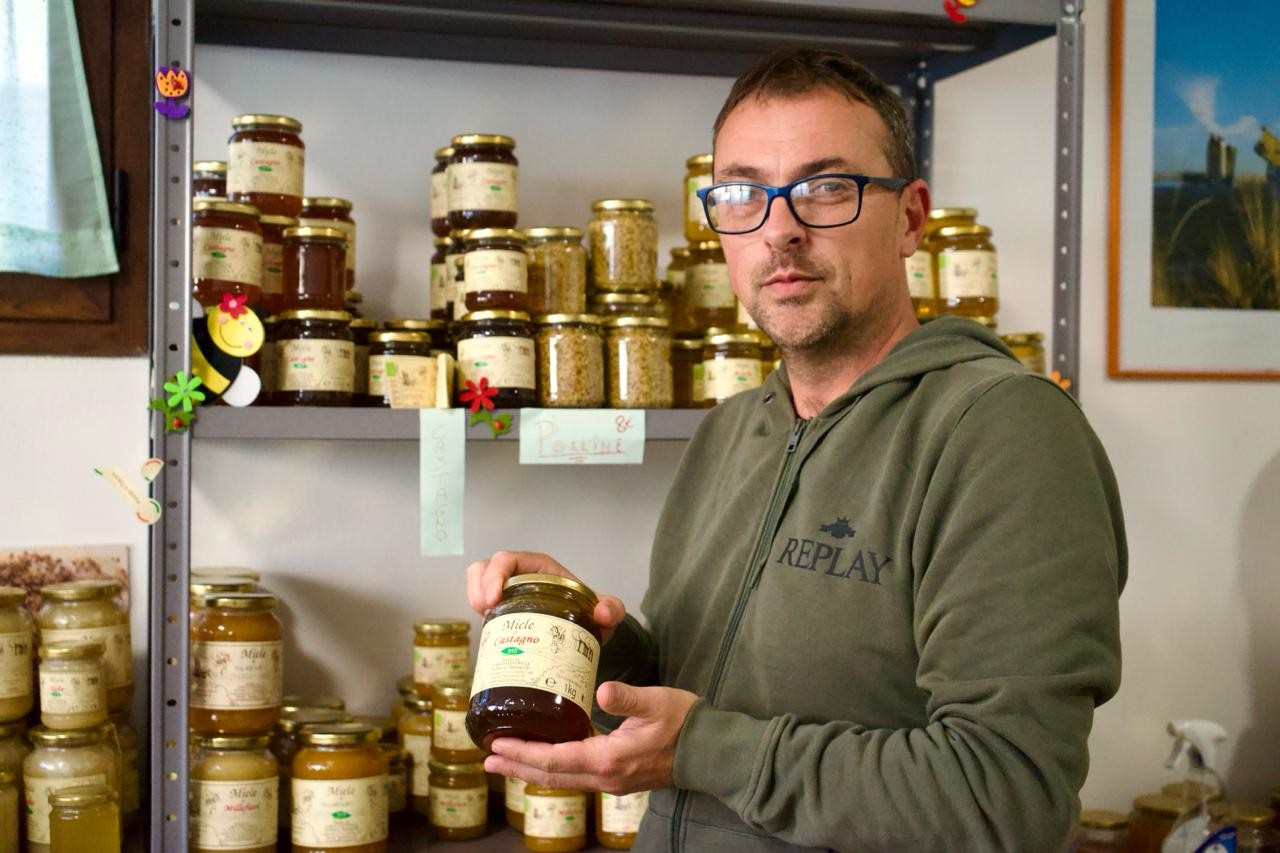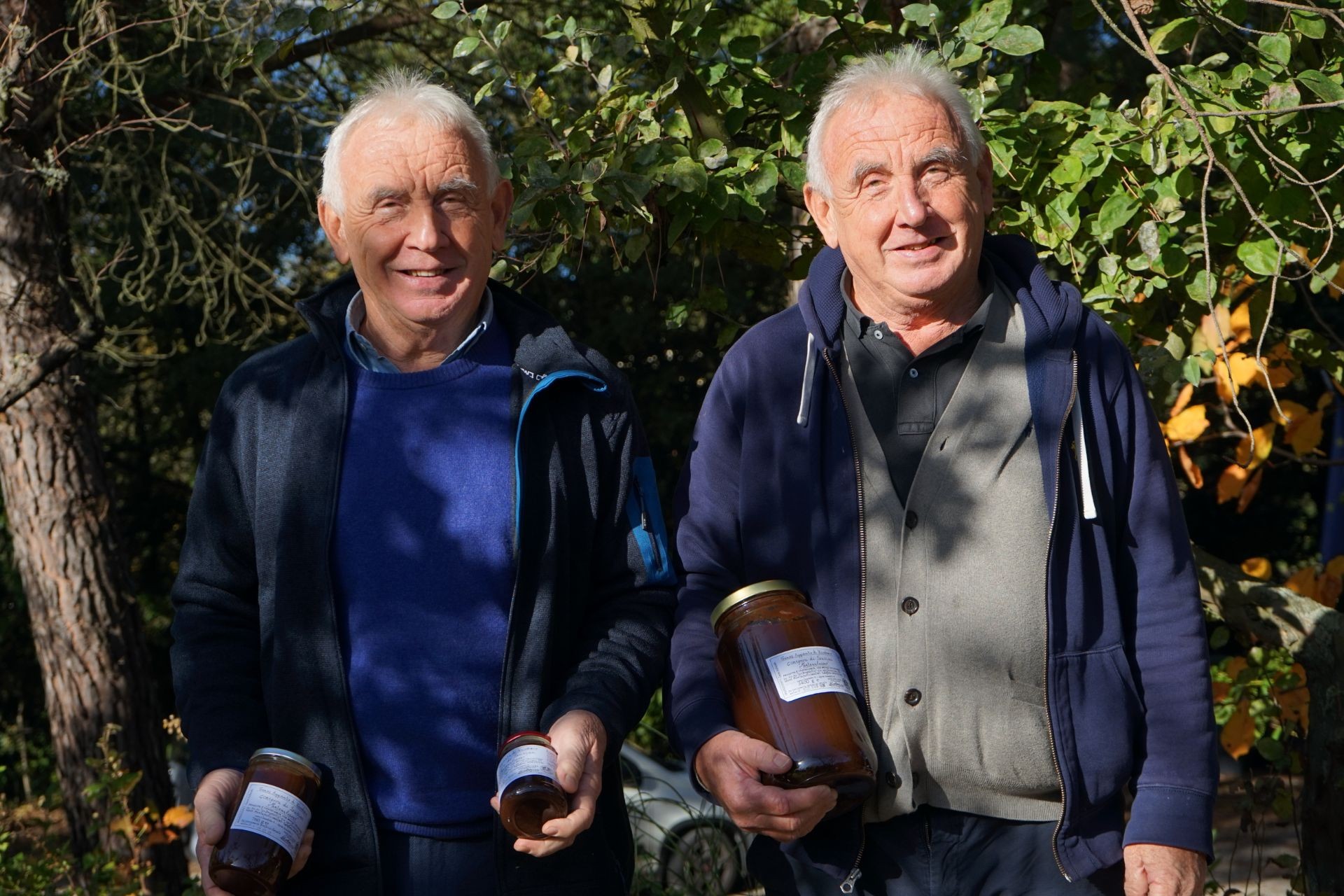Local Ambassador Stories: Ida Corbari, the Bico of Piazze, Cetona
Community and taste blend in the history of this small town in Valdichiana Senese
There’s a scent that fills the air in Piazze, a small hamlet of Cetona, at the end of June. It’s the aroma of Bico, the humble bread with an ancient flavor that has brought life to the Sagra del Bico festival for almost thirty years.
Behind this simple dish lies a story made of hands kneading dough, ovens lit at dawn, and women laughing and debating over which is the “right” recipe. Among them is Ida Corbari, the “queen of the Bico,” who was one of the first to believe, together with others, in the potential of this rural tradition.
A Secret Recipe Passed Down Through Time
“Bico is made like this…” says Ida, pulling out a small white piece of paper from a tin box — folded and unfolded countless times. It’s her recipe, carefully guarded for years, along with photos and newspaper clippings.
She won’t reveal the recipe, but drops a few hints: “With one batch we made forty portions. We worked with six hundred grams of dough, then divided it into four parts. Everything was done by hand, with a rolling pin, just like in the old days. Today they use mixers and dough rollers, but before it was a whole different story.”
Ida smiles as she recalls the first editions of the festival, born in 1997 to raise funds for the Arturo Toscanini Municipal Band. “We needed an idea to pay the music teacher. We thought of doing something simple: Bico. Then came tripe, pici, tagliatelle… but it all started from there.”
The Taste of Community
Bico is more than just a dish — it’s a ritual. Ida used to knead in large basins, measuring the ingredients “by eye,” letting the dough rest for half an hour or so before dividing and rolling it out, ready for the wood-fired ovens.
In the early years of the festival, about twenty people worked in the kitchen, all coordinated by Ida, who recalls with a touch of pride:
“I worked a lot, but I also enjoyed it. You have to treat people well — that’s something I always kept in mind.”
Today, technology has made the work easier, but the Sagra del Bico still involves over 150 people and welcomes more than 5,000 visitors each year between late June and early July. Five ovens bake Bico non-stop as the whole village turns into an open-air workshop. Stalls for sauces, potatoes, desserts — and of course Bico — fill the streets of Piazze.
A Peasant Tradition
“In the past, people made Bico under the hearths; folks were poorer then,” Ida explains. “They’d cover it with ashes and bake it next to the fire. Farmers used whatever they had: water, flour, salt, and baking soda — some even added eggs if they couldn’t afford the soda.”
Today, Bico is one of the most representative foods of the Valdichiana Senese, although it’s not easy to find all year round: there’s a Bicheria in Cetona and a few restaurants in the area serve it occasionally.
And while the Bico itself is little more than water and flour, the toppings that accompany it at the Sagra del Bico are plentiful — more than 20, from the traditional sausage and greens to the famous buglione, a rustic stew whose name in the Valdichiana dialect also means “a big mess.”
The Band, the Majorettes, the Festival
Next to Ida is Monalda Medi, who has taken over the organization of the festival and continues its spirit. Monalda is a majorette with Le Toscanine, the group that has accompanied the Arturo Toscanini Band since 1984.
In Piazze, the band, the majorettes, and the festival are inseparable — three souls of one tradition, united by music, enthusiasm, and passion.
Ida remembers the first handmade ovens, the pots brought from home, the laughter with her friends, and her husband Bruno, the village blacksmith, always ready with a joke: “He’d tell me to stop when I looked too tired, but I just couldn’t.”
In Ida’s words intertwine memories of work, music, and affection — the story of a village that found its truest identity through its band and its festival.
The Arturo Toscanini Band, named after the great conductor who visited Piazze in the 1930s, is still today the beating heart of the community. It was thanks to the band that in 1997 the Sagra del Bico was born — a festival that lives on year after year, thanks to women like Ida and all those who keep the tradition alive.
Ida mentions many names during her interview — her story is a collective one, from start to finish.
The Secret of Success
After more than twenty-five years, the Sagra del Bico has become a beloved and recognized event. It proves that tradition can drive the present, that memory stays alive when shared, and that a simple recipe can tell a story far deeper than its flavor — it can tell the story of an entire land.
“I’ve worked hard,” Ida says with a proud smile. “I was a cook for many years in the hotels of Chianciano Terme, and I still love cooking for my family and my grandchildren.”
Then she adds, with a sparkle in her eye:
“The other day I had my wood oven on, there was chaos all around… but I took advantage and baked a ciambellone. Because really, what’s better — baking in a kitchen oven or in a wood-fired one?”
Her eyes shine mischievously as she speaks, and her hands — marked by time — seem to confirm every word: they have kneaded, cooked, and created.
“How many things I’ve done in my life,” she says, “but I don’t stop. Stopping is worse.”
The Local Ambassador’s Place of the Heart
"My favorite place is Piazze".











